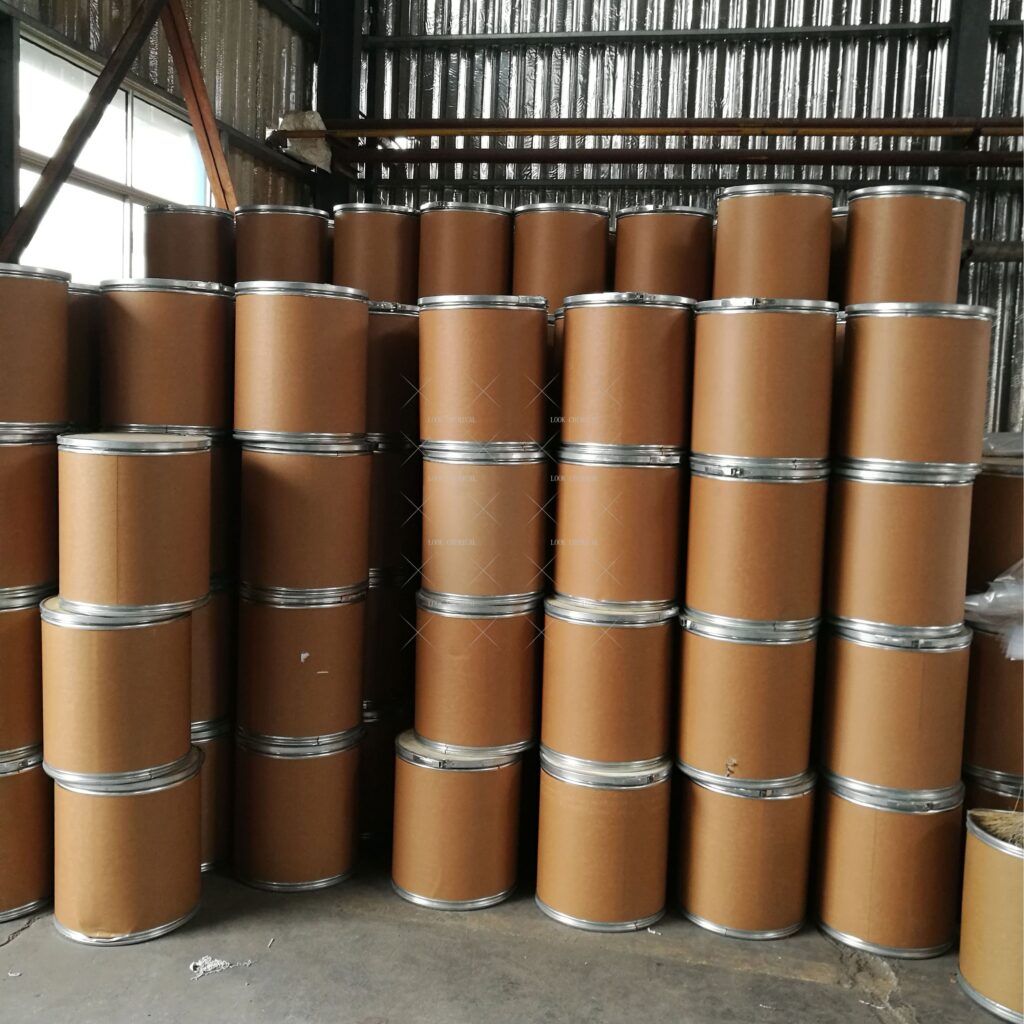Tellurium CAS 13494-80-9

High Quality Tellurium CAS 13494-80-9
- Appearance:Crystal
- Purity:99.8%
- Delivery:30days
- Sample Available:Available
- Payment:L/C,T/T,D/P,Paypal,Money Gram,Western Union
- Incoterm: FOB,CFR,CIF,EXW,FCA,CPT,CIP
- Transporta:Ocean, Land,Air, DHL,TNT FedEx
Name: Tellurium
CAS: 13494-80-9
MOQ: 1KG
Directory Guidance on Tellurium
Product Introduction:
Tellurium is a rare chemical element with the chemical symbol Te and the atomic number 52. It belongs to the VI A group in the periodic table. It has two allotropes: one is a hexagonal crystal with a silvery-white metallic luster, and the other is an amorphous black powder. Tellurium has a melting point of 452°C, a boiling point of 1390°C, a brittle texture, and chemical properties similar to antimony.
It belongs to the chalcogenide element and has many similarities with selenium and sulfur in chemical properties. Tellurium is rarely distributed in nature and usually exists in the form of compounds. It is commonly found as an associated mineral in ores such as gold, silver, and copper.
Tellurium has a metallic luster and brittleness and is easily cut or broken. In the periodic table, it is in the transition zone between metals and non-metals, so it has both metallic conductivity and some non-metallic properties. It is a semi-metal element.
Tellurium produces a blue flame when burned in air, generating Tellurium dioxide (TeO₂) with a pungent odor. It reacts with both acids and bases, showing amphoteric characteristics.
The main uses of Tellurium are concentrated in the high-tech field. It is widely used in semiconductor materials such as cadmium telluride (CdTe) and bismuth telluride (Bi₂Te₃), which have important applications in solar cells, thermoelectric materials and infrared detectors. In addition, it is also used as an alloy additive to improve the mechanical properties and corrosion resistance of metals.
In the chemical industry, Tellurium compounds are also used as catalysts or raw materials for dyes.
Tellurium compounds are somewhat toxic to organisms, but due to their small usage, their impact on the environment is relatively limited. In industrial production, its handling requires protection to prevent harm to human health and the ecosystem. Studies have also found that some microorganisms are able to reduce the Tellurium element, which provides the possibility of future application in environmental governance.
Basic Info:
Chemical Structure
| Melting point | 450 °C (lit.) |
| Boiling point | 990 °C (lit.) |
| density | 6.24 g/mL at 25 °C (lit.) |
| vapor pressure | 0Pa at 25℃ |
| storage temp. | Sealed in dry,Room Temperature |
| solubility | insoluble in H2O, benzene, CS2 |
| Specific Gravity | 6.24 |
Nature and Specifications:
| Item | Specification |
| Product Name | Tellurium |
| CAS No. | 13494-80-9 |
| Appearance | Crystal |
| Shelf Life | 2 years |
| Packing | As your requirements |
| solubility | insoluble in H2O, benzene, CS2 |
| Specific Gravity | 6.24 |
| color | Silver-white |
| resistivity | 5.8-33 μΩ-cm, 20°C |
| Water Solubility | insoluble H2O, benzene, CS2 [MER06] |
What Are The Uses of Tellurium
Product service:
Tellurium is a versatile element that has a wide range of applications in many fields due to its unique physical and chemical properties.
1. Semiconductors and Electronics
Tellurium is particularly important in the semiconductor field. Due to its excellent electrical conductivity and photoelectric properties, it is used as a component of a variety of semiconductor materials. Common applications include:
Cadmium telluride (CdTe) solar cells: This is one of the most commonly used thin-film solar cell materials and is favored for its high photoelectric conversion efficiency, low cost, and simple production process. CdTe solar cells can effectively convert solar energy into electrical energy and are widely used in photovoltaic power generation systems.
Bismuth telluride (Bi₂Te₃): This compound is a common thermoelectric material that can directly convert heat energy into electrical energy or convert electrical energy into heat energy under the action of temperature difference. Bi₂Te₃ materials are mainly used in thermoelectric power generation and refrigeration applications, such as in thermal management systems of electronic devices and automobiles.
Other semiconductor applications: Tellurium is used as a photoelectric material in some photodetectors and infrared sensors with excellent response speed and sensitivity.
2. Solar Technology
The application of Tellurium in the photovoltaic field is mainly concentrated in the production of CdTe solar cells. Compared with silicon-based solar cells, CdTe cells have lower production costs and higher photoelectric conversion efficiency, especially in low-light environments.
Their manufacturing process does not require high temperature and high pressure processing, which is relatively energy-saving and environmentally friendly. With the promotion of renewable energy, the market demand for CdTe solar cells has increased year by year.
3. Thermoelectric Materials
The application of Tellurium in the field of thermoelectric materials is very important. Bi₂Te₃ alloy is one of the most mature thermoelectric materials currently, suitable for medium and low temperature ranges (about 250-500 K). Thermoelectric materials can realize the conversion of thermal energy to electrical energy under the action of temperature gradient, which is used for thermoelectric power generation; conversely, they can also achieve cooling effect under the action of electric current.
Industrial waste heat recovery: convert waste heat generated by industrial equipment into electrical energy to improve energy utilization efficiency.
Refrigeration equipment: Thermoelectric coolers are used for cooling electronic components, as well as portable refrigerators and refrigeration units.
4. Alloy and Materials Engineering
The application of Tellurium in alloy and materials engineering is mainly as an additive to improve the properties of metals:
Steel and copper alloys: Adding a small amount of Tellurium to steel and copper alloys can improve their mechanical properties and corrosion resistance. It can improve the wear resistance, ductility and oxidation resistance of metals.
Lead alloys: Adding this product to lead alloys can improve their corrosion resistance and make them last longer in battery manufacturing and other industrial uses.
5. Catalysts
Tellurium compounds also have important applications in catalytic reactions, especially in the petroleum and chemical industries. Its compounds can catalyze a series of reactions such as redox reactions and sulfidation reactions.
Petroleum refining: In petroleum refining, tellurium compounds are used as catalysts to promote certain chemical reactions such as desulfurization and recombination reactions, thereby improving fuel quality.
Organic synthesis: Some tellurium compounds are used as catalysts or catalyst promoters in redox reactions and other chemical processes in organic synthesis.
6. Optics and optoelectronics
Tellurium is also used as a raw material for optical materials. Due to its unique optical properties, it and its compounds can be used to make optical lenses, optical coatings and infrared window materials, which are very important in infrared optical devices. Its optical properties make it an important application in infrared detectors and night vision equipment in high-tech fields.
7. Biomedical and other special uses
In the biomedical field, the application of tellurium is relatively small, but some research is exploring its possibilities:
Antibacterial and antiviral research: It and its compounds show certain antibacterial and antiviral activities, so they have potential in research in the pharmaceutical and biomedical fields.
Medical imaging: Some tellurium compounds can be used in medical imaging technology, such as X-ray imaging and other related detection.
As a versatile rare element, Tellurium is widely used in semiconductors, photovoltaic technology, thermoelectric materials, alloys, catalysts, optics, medicine and environmental protection.
Safety Precautions of Tellurium
The safety of tellurium is an issue that requires attention, especially during its use and handling. Although it has a wide range of applications as an element in certain fields, its compounds and trace amounts still have certain toxicity and potential health risks.
1. Toxicity and health effects
Tellurium and its compounds have relatively low toxicity, but they can still have adverse effects on the human body at high concentrations or long-term exposure. In particular, its compounds (such as tellurium dioxide TeO₂) may be harmful to health.
Acute toxicity: High concentrations of tellurium vapor or compounds may cause symptoms such as respiratory irritation, coughing, sore throat, headache and nausea. In severe cases, it may cause breathing difficulties and poisoning reactions.
Chronic toxicity: Long-term low-dose tellurium exposure may cause chronic poisoning, manifested as skin and eye irritation, and long-term contact may cause skin lesions and hair loss.
Symptoms of tellurium poisoning: including dry mouth, gastrointestinal discomfort, loss of appetite, dizziness and fatigue. In extreme cases, tellurium poisoning may also affect the nervous system, leading to memory loss and poor coordination.
2. Biological and ecological safety
Tellurium has low bioaccumulation in organisms, but in some cases, its compounds can be absorbed by microorganisms or plants and accumulate in the food chain.
Studies have found that some microorganisms can reduce tellurium to form non-toxic metallic tellurium, which provides potential applications in environmental remediation in the future.
3. Safety in industrial and scientific research
In industrial and scientific research, when using Tellurium, safe operating procedures should be strictly followed to ensure that workers are not exposed to harmful effects.
Health and safety information about this product needs to follow international and national guidelines, such as the standards and procedures established by the U.S. Occupational Safety and Health Administration (OSHA) and the European Chemicals Agency (ECHA).
- Certificate Of Analysis (COA)
- Material Safety Data Sheet (MSDS)
- Route of synthesis (ROS)
- Method of Aanlysis (MOA)
- Nuclear Magnetic Resonance (NMR)
- Packing pictures and loading video before loading
- Free Sample
- Factory audit
Contact Us
Product picture:



Product Package picture:


Related References:
chemicalbook-Tellurium
Antimony Triacetate Manufacturer
Contact Us
As an experienced Tellurium manufacturer and supplier, Look Chemical is committed to producing and selling high quality products.
We cooperate and trade with 6000+ factories around the world, and our high-quality products and excellent services make us enjoy a high reputation internationally.
As Tellurium CAS 13494-80-9 supplier, Look Chemical provides supply chain solutions to partners and customers in a wide range of industries. We offer competitive pricing and quality products.
If you have a demand for this product, please contact our company’s sales staff, we will provide you with a solution in the shortest time.
Transport proposal

1. For products ≤50kg, we recommend using express delivery, which is usually called DDU service (discounted, convenient).
2. For products ≤500kg, we generally recommend air freight, which is usually called FOB, CFR or CIF service (fast and efficient).
3. For products >500kg, we generally recommend shipping by sea, which is usually called FOB, CFR or CIF service (economical, safe).
4. For high-value products, please choose air or express to ensure the safety of product transportation.
Shandong Lookchemical service:
* Timely reply and 24 hours online, the professional team will provide you with the most favorable prices and high-quality products.
* The sample supports testing and inspection.
* Each batch of products will be tested to ensure that its quality meets user needs.
*Packaging can also be made according to customer requirements.
*Any inquiries will be answered by our relevant personnel within 24 hours.
*We will provide you with commercial invoice, packing list, packing list, COA, health certificate and certificate of origin if you need it. If your market has other special requirements, please let us know.
*We will monitor the logistics information in real time and will share the information with you.
* You can consult us at any time if you have any questions about the product, and we will answer you in time.
*If you have any questions about the product, you can report it to us, we will deal with it in time for you, and the product can be returned.
Frequently Asked Questions(FAQ):
We will make samples before mass production, and after sample approved, we’ll begin mass production. Doing 100% inspection during production, then do random inspection before packing.
Our MOQ is 1kg. But usually we accept less quantity such as 100g on the condition that sample charge is 100% paid.
Yes. We’ll give you product analysis report before shipping.
Different quantity has different discount.
Yes. Welcome to visit.
You can get free samples for some products,you only need to pay the shipping cost or arrange a courier to us and take the samples. You can send us your product specifications and requests,we will manufacture the products according to your requests.

